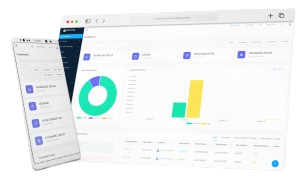Although inventory and Supplies may seem interchangeable, they serve distinct roles in your business. Understanding the difference is important for smooth operations, accurate accounting, and effective resource management. Supplies keep your business running daily, while inventory directly contributes to your products or services. Knowing how to categorize and manage these items ensures your business stays organized, profitable, and prepared for growth.
What is Inventory?
Inventory includes the products your business purchases or produces to sell to customers. This can range from raw materials to finished goods. For example, if you own a candle business, the wax, wicks, and fragrances used to create the candles are inventory. Finished candles ready for sale are also inventory.
Whether you manufacture products or resell them, inventory refers to anything directly tied to what your business offers to customers. It’s a big part of your business’s operations and is typically classified as a short-term asset on your balance sheet.
What are Supplies?
Supplies are the everyday items your business needs to operate but don’t become part of the products you sell. These can include paper, packing materials, ink, or toner. For instance, if you run a candle business, the boxes and bubble wrap used to ship your candles are supplies—not inventory.
Supplies help keep your business running smoothly, ensuring you can package, ship, and maintain daily operations. Unlike inventory, supplies are usually classified as business expenses rather than assets.
Key Differences Between Inventory and Supplies
Inventory and supplies serve different purposes in your business. Inventory includes items you sell to customers, such as raw materials, work-in-process goods, or finished products. These are considered short-term assets and directly contribute to your revenue.
Supplies, on the other hand, are tools and materials your business needs to operate. They don’t appear in the products you sell but are required for packaging, shipping, or daily operations. Supplies are recorded as business expenses.
In short, inventory is tied to what you sell, while supplies help you run your business effectively. Both are crucial but managed and tracked differently for financial accuracy and operational efficiency.
Managing Inventory and Supplies
Effectively managing inventory and supplies is vital to keep your business running smoothly and profitably. While both require careful tracking, their management strategies differ.
Inventory needs precise demand forecasting to avoid overstocking or running out of stock. This is especially important for items prone to expiration or obsolescence. Supplies, however, can often be purchased in bulk, as they are typically non-perishable and consistently used.
An inventory management system can simplify tracking both categories. A good system helps you monitor quantities, organize products, and forecast needs. By managing inventory and supplies well, you’ll save time, reduce waste, and maintain consistent operations.
Conclusion
Knowing the difference between inventory and supplies makes running your business a lot easier. Inventory is what you sell, while supplies are what you use to keep things running smoothly. Both are important, but they need to be managed differently.
A good system for tracking and organizing both will save time, avoid confusion, and keep your business on track. This simple step can make a big difference in keeping your operations smooth and your finances accurate.






